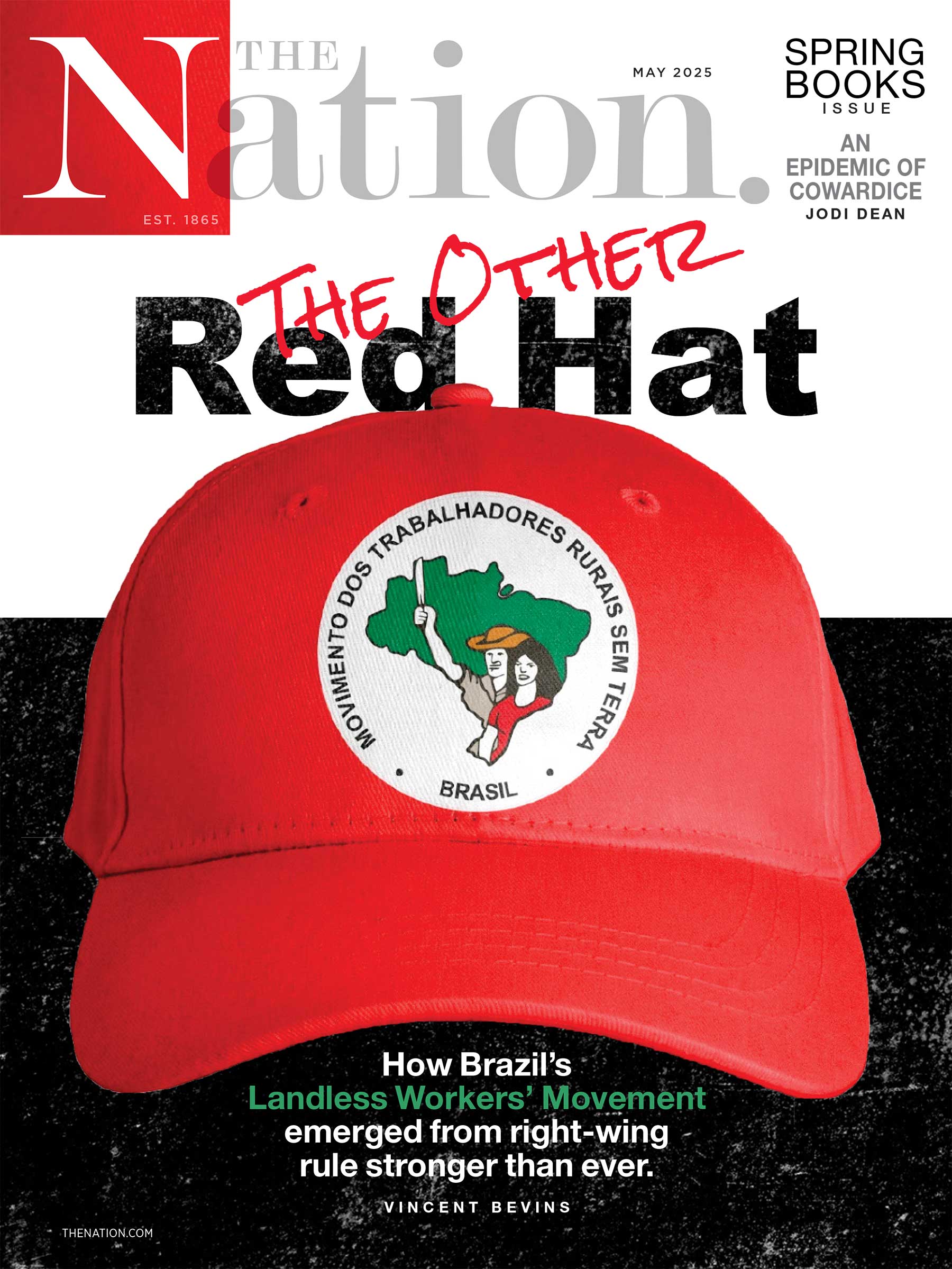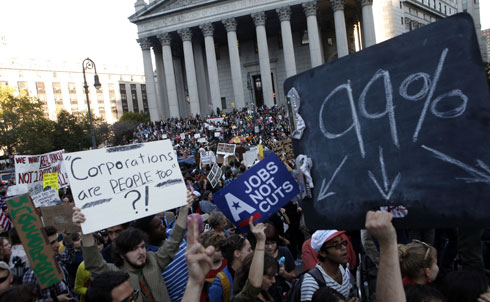
Since activists first set up camp in Lower Manhattan’s Zuccotti Park on September 17, scores of protests and occupations have sprung up across the country as part of the Occupy America movement. Here are a few of the major sites where students, activists and ordinary Americans have occupied spaces in their cities to demand economic and social justice, and why each occupation matters.
Credit: AP Images
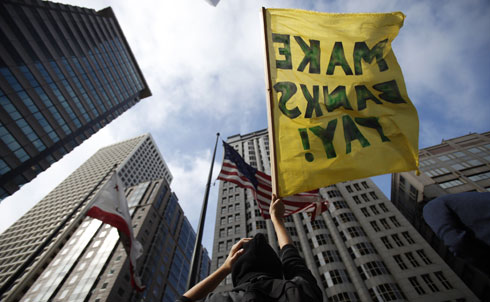
Occupy San Francisco kicked off their occupation on September 17 with a demonstration in front of the Federal Reserve Bank on downtown’s Market Street. The encampment outside the bank got dismantled by police last Thursday for lack of a permit, but about fifty of them continue to sleep on the sidewalk, sans tents, as they and the city work on finding a new location. During the day, occupier Kames Cox-Gerhehty says, “the numbers grow exponentially.”
The San Francisco movement, now backed by unions and community groups, organized a march Wednesday morning called Foreclose on Wall Street, which organizers estimate drew 500 plus demonstrators, including Naomi Klein. Two hundred of those protesters temporarily shut down the headquarters of Wells Fargo and posted foreclosure notices on the bank’s doors. Eleven were arrested.
Both the police and Mayor Edwin Lee have issued statements in support of protesters’ freedom of speech and assembly. The mayor even delivered porta-potties.
“What’s going on is fantastic,” says Cox-Gerhehty. “There are new faces every day. We plan to occupy indefinitely until we make a difference.”
—Erika Eichelberger
Credit: Reuters Pictures
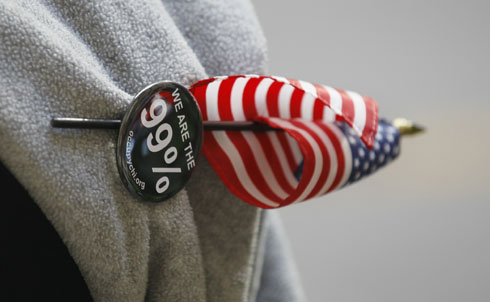
One of the first cities to follow New York’s lead was Chicago, and in many ways Occupy Chicago could serve as a model of legitimacy so urgently needed by the movement. Some members of Occupy Chicago have drafted a concrete list of demands to focus their efforts, though organizers say internal reactions have been mixed. Activists are also proud of their open dialogue with police, saying some individual officers have expressed interest in joining them.
But the Chicago movement has faced one major obstacle: finding a place to actually occupy. Currently grounded at the corner of Jackson and LaSalle across from the Bank of America and the Chicago Board of Trade, activists in Chicago don’t have a space to sleep and must keep supplies in a restricted area. The up-all-night cycle is exhausting, but hope remains, says Kelvin Ho, a member of the movement. “I think the fact that we haven’t been able to find a place and set up camp is sort of unique and the fact that we’ve still been able to increase our numbers day-by-day in spite of that is really encouraging.”
—Allie Tempus
Credit: AP Images
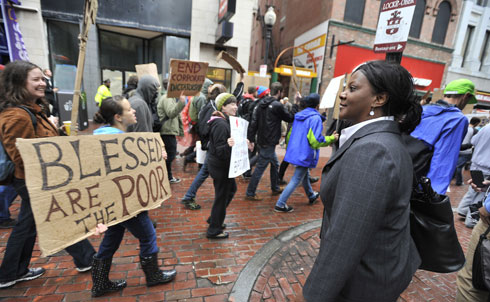
“I never heard about [Occupy Wall Street] in advance,” said Occupy Boston organizer Robin Jacks of the demonstration in Zuccotti Park. But after seeing reports of police brutality at the New York protests on Twitter, Jacks quickly secured the @Occupy_Boston handle. The group held its first General Assembly two days later, choosing September 30 as the starting date for its occupation; they have been camped out in downtown Boston’s Dewey Square ever since.
Though Occupy Boston continues to hone its demands, it expressed the sentiment behind the occupation in a brief letter addressed to the 1 percent and delivered to the Massachusetts Statehouse and Bank of America on October 3: “Get out of our government. We want our country back.”
Since its inception, the occupation has swelled in size, spilling out onto the larger Rose Kennedy Greenway, of which Dewey Square is just one small part; this second encampment had its own confrontation with Boston police early Tuesday morning after protesters ignored a directive to vacate the area. A hundred and forty-one people were ultimately apprehended, and video footage emerged of police making violent arrests. Now confined to Dewey Square, Occupy Boston is still working to solidify plans for the coming winter and future expansion. But Jacks is certain of one thing: “We’re not going anywhere. We’re not moving. If anything, what happened Tuesday morning has emboldened us, and it has strengthened our resolve to remain peaceful.”
—Angela Aiuto
Credit: AP Images
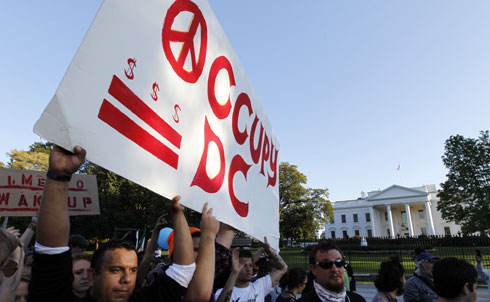
OccupyDC has taken up residence in McPherson Square, right along the lobbyist center of K Street and just blocks from the White House. Like their fellow occupiers off Wall Street, the OccupyDC protesters conduct general assemblies and committee meetings each day, and have made several forays out to march against the symbols of corporate greed and malfeasance in the nation’s capital. One solidarity march with the SEIU’s Justice for Janitors rally led the occupiers through K Street before returning the square.
And OccupyDC isn’t even the only occupation currently underway in DC: the group Stop The Machine have been occupying Freedom Plaza since October 6. STM occupied the square in opposition to the tenth anniversary of the invasion of Afghanistan and the start of the “War on Terror,” and their recent protest against the National Air & Space Museum’s drone exhibit and their protest against war policies in the Hart Senate Building have received some good media attention.
—Cal Colgan
Credit: AP Images
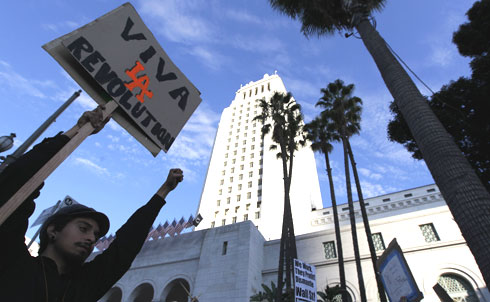
Occupy LA didn’t really get going until Rose Gudiel got kicked out of her house. A state employee from La Puente with pink cat-eye glasses, Gudiel was foreclosed on by OneWest Bank, even after she repeatedly petitioned to modify her loan due to extenuating circumstances (her mother, 63, is disabled; her brother, who once provided a significant amount of the family’s income, was gunned down in 2009). Union leaders and occupiers formed a vigil around the bank president’s rambling Bel Air mansion and surrounded the Gudiel home, in an attempt to physically keep the police from evicting the family. Gudiel and five others were arrested, but the bank eventually relented. The Gudiels kept their home. The success provided the spark needed for LA’s occupation, and now nearly 400 young activists have set up their tents in front of City Hall—making Occupy LA the second-biggest occupation in the country.
Despite the protest’s contentious beginnings, Los Angeles’s protesters have faced much less harassment from authorities than their fellow occupiers in Boston, Atlanta and other corners of the nation. “We have a cakewalk compared to New York,” activist Allen Eaton told The Atlantic several days ago. Occupy LA enjoys the active support of local celebrities and the LA City Council. Council member have visited the occupiers’ tent city—going so far as to exchange hugs with protesters. This Wednesday they even passed a resolution declaring the city’s official support for the protests.
—Teresa Cotsirilos
Credit: AP Image
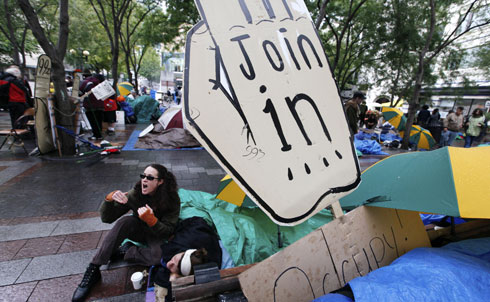
On October 1 Seattle officially joined the nationwide “Occupy” protests by marching in the city’s financial district in downtown Seattle and organizing a permanent camp in Westlake Park. According to OccupySeattle organizers, 1,500 people participated in the first demonstration and about 300 people are regularly occupying the public plaza. The movement came together after witnessing what was going on at Occupy Wall Street, says Aliana, a media spokesperson of Occupy Seattle. “We felt a connection with them,” she adds “and we are trying to convey the same message.”
The protest in Seattle has been peaceful, with few arrests in the past weeks; but things may be about to change. On October 12, Mayor Mike McGinn announced that he had instructed the Parks Department and the Seattle Police to enforce the rules at Westlake Park—no tents, camping or remaining in the park after 10 pm. Two arrests followed the same night. But just hours after the announcement, hundreds of college students from local campuses joined the protest in Westla ke Park. In their speeches they were clear in saying that the Occupy movement is “the most important, grass-roots social movement in a generation.”
Occupy Seattle has planned a “night of 500 tents” for Saturday, October 15, with the hope that a critical mass of occupiers will make evicting them from the plaza park impossible.
—Paolo Cravero
Credit: AP Images
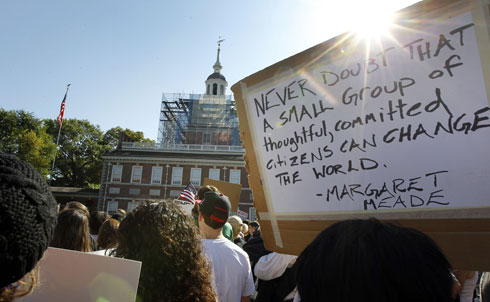
Since October 6, activists have been occupying Dilworth plaza, an outdoor space at the center of Philadelphia’s City Hall. The date and location were chosen at a thousand-person Occupy Philly General Assembly that packed Arch Street United Methodist Church two days earlier. On Saturday, two thousand people marched past the Liberty Bell, to historic Independence Hall, to “declare independence from Wall Street.”
Occupy Philly members have joined a labor rally for jobs legislation and a march targeting Wells Fargo. Philly Jobs with Justice Executive Director Gwen Snyder says that Occupy Philly is currently planning an action targeting the city’s recently imposed curfew, an “edict from Mayor [Michael] Nutter that really targets Black youth.” Snyder, Occupy Philly’s designated “labor bottom-liner” says she’s been impressed by the group’s ability to move forward quickly, democratically and inclusively. She estimates seventy to 100 people have been sleeping there each night.
Mayor Nutter’s office has been vocal in claiming that the city supports many aims of Occupy Philly and wants to coordinate smoothly with the action. On their first night in City Hall, Occupy Philly participants held a lengthy debate over whether to apply for a demonstration permit, as urged by city officials; the decision was tabled for lack of consensus. Tensions with the city may rise soon. A mayoral spokesperson warned Wednesday that Dilworth will need to be cleared and cordoned off for renovations in November. Snyder says that while Occupy Philly is still formulating a response, “We’re going to keep it up one way or another.”
—Josh Eidelson
Credit: AP Images
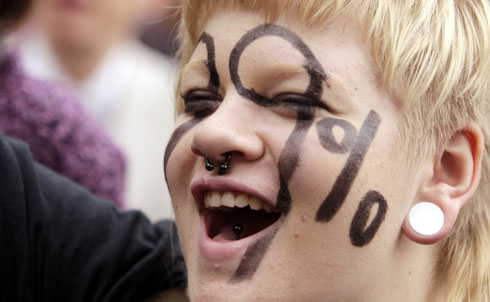
Unlike other, more specialized iterations of the recent "Occupy" movements, the unifying name OccupyMN connects all Minnesotans to the Minneapolis-based protests that began last Friday morning at the Hennepin County Government Center Plaza, renamed “People’s Plaza” by the occupation’s organizers. The operation, still in its infancy, has drawn up to 500 protesters and touts the populist message “People Before Profits.”
OccupyMN’s efforts are targeted at the local and regional banks, demanding “a people’s budget” that begins with banks paying a fair share of the federal deficit. In the week that OccupyMN has been operative it has held three marches to major banking institutions and has demanded to meet with top banking officials to discuss responsible banking practices and the state’s foreclosure crisis. According to Kevin Whelan, activist and Communication Coordinator for the coalition Minnesotans for a Fair Economy, the “people are finally coming together with concrete campaigns that community and faith-based organizations have been working on,” but the “upsurge in energy” he says, lies in “new people” coming into the fold.
—Collier Meyerson
Credit: AP Images
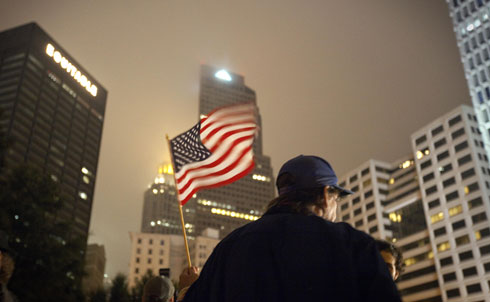
Occupy Atlanta kicked off officially in downtown Atlanta on Friday, October 7, with about 200 people gathering at Woodruff Park, or “Troy Davis Park,” as it has been renamed by the occupiers. Congressman and civil rights movement leader John Lewis visited the rally on the first day, but the General Assembly voted to not allow him to speak during the assembly on the grounds that no voice should be given precedence over any other, an incident that has caused quite some controversy.
Atlanta police did not confront the protesters over the weekend, but, according to protesters, on Monday evening a significant number of police officers surrounded Woodruff Park. “There were only about eighty of us,” says a protester, “so we started to call and text our friends to come and join us. By the time when more police arrived, we had more than 400 people. And [the police] ran away.”
Victory like this, however, will probably come with a much higher price for the occupiers in the near future. Mayor Kasim Reed gave occupiers until next Monday to vacate the park, after he returns from DC, where he will give a speech at the new Martin Luther King Jr. Memorial. Perfect timing.
—Jin Zhao
Credit: AP Images
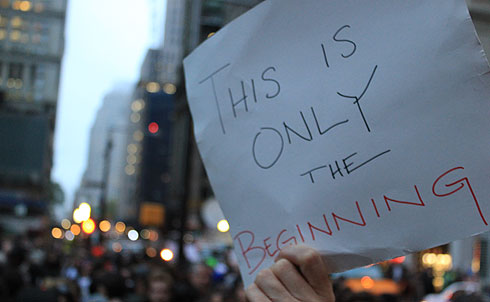
Of course, these are just some of the largest occupations currently underway—more are popping up from Portland, Oregon to Portland, Maine, and many places in between. For more on the Occupy Wall Street movement, visit The Nation‘s special section front for the protests.
Credit: Francis Reynolds
